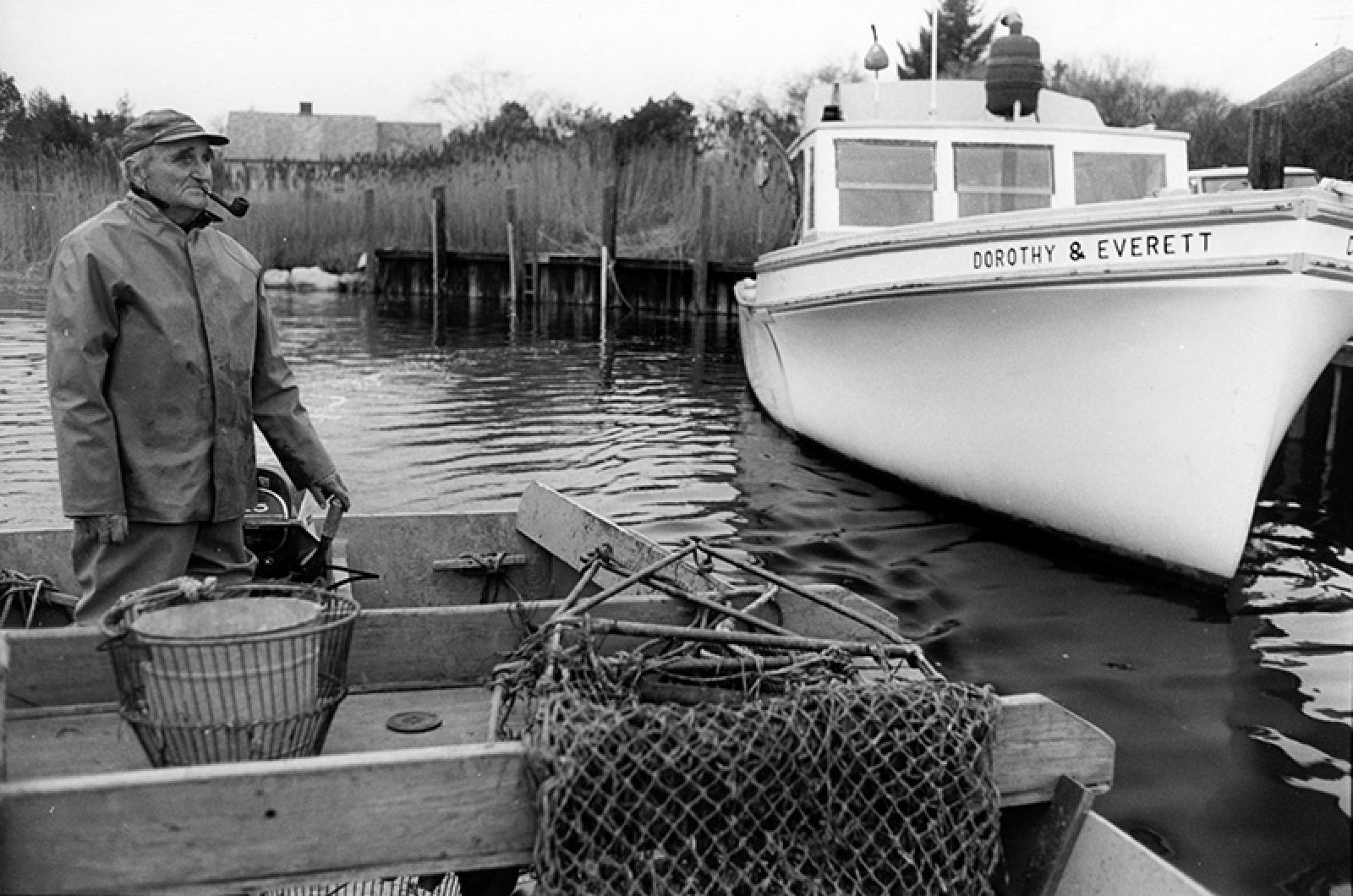From the Oct. 23, 1970 edition of the Vineyard Gazette:
With fall half gone, or winter halfway alongside, take your pick, it looks as if the luck of the lobster fleet is just catching up. True a good deal of gear was already ashore two weeks ago, some of it even three weeks ago, and so let’s face it, the competition on the offshore ledges wasn’t as keen as it had been. Just the same, there must have been some lobsters out there, for as of this writing, Poole has hoisted out two tons and more in about a week’s time.
It was time to dig potatoes at the Whiting Farm in Quansoo, Chilmark, a date that is determined by the possibility of frost and the availability of willing hands. The potato digger was brought out of the barn, clattering and complaining, and a heavy load of grease was applied to its most vulnerable parts. The machine was ancient, not venerable, and dated from a time when horses still drew farm equipment.
This machine once required three horses to drag it along the unyielding earth, but now was being pulled by a tractor. It was a Hoover machine, from 1913, and it is said that after Hoover produced this mechanism, it gave up and turned to vacuum cleaners.
The wheels of the Hoover digger resemble narrow steamboat paddles, but the iron paddles are used to dig into the earth, not the water and are meant for traction, not propulsion. Iron blades dig into the earth, search out the potatoes, and pile them in small heaps at the side of the furrow. At one time the digger performed other services as well, but parts have fallen off or been broken off, and each was deemed dispensable as it went. Now it provides only the basic service of digging and piling.
After that, a number of people go along the rows, picking up the potatoes and piling them into pails and then into gunny sacks. Here it is that the Whiting finesse (or the Tom Sawyer picket fence ploy) comes into play. It is the estimable knack of making work seem like spontaneous recreation so that any number of people will willingly join in any given task.
This knack is also evident in May, when the potato planting is accomplished, also with the use of the bizarre and complicated old potato planter, also dating from 1913. This machine is called an Iron Age planter and is a Rube Goldberg delight. It is from a time in which people were overly fond of machines and enjoyed having all the gears and shafts and cogs right out in plain view - as in certain European countries where plumbing is so highly prized that it is prominently displayed on the outsides of buildings.
The Iron Age planter digs a furrow, drops a precise modicum of fertilizer at spaced intervals, then drops a segment of potato over the fertilizer, and then covers up the hole neatly. It does all this with an impressive series of cogs that work gears that turn wheels that open holes. In order to work, the machine must have a young boy or a thin girl sitting on a seat at the end of the machine, in order to balance it exactly. While providing the right balance, the human counterweight must also drop a segment of potato into each iron cup which revolves around to an opening, through which the potato plummets into the good earth.
This is usually a well-attended show, and somehow, each year, a young boy or girl of exactly the right size appears.
The origin of the potato is, as they say, “shrouded in mystery.” Either Walter Raleigh took it to England from Virginia in 1585 or he did not. Sir John Hawkins is also said to have introduced it to Europe in 1565. But there are some who claim that Hawkins shipped only sweet potatoes and that the true introduction of the potato to Europe was done by a monk named Heironymus Cardan who carried the tuber to Spain from Peru in 1553.
In late July, when the flower drops from the potato plant, new potatoes are available to be dug and cherished. Here, the sybarites are weeded out from the pragmatists. A far-reaching decision must be made. Should the new potatoes be dug up and devoured before they are fully grown? Aesthetics vs. economics. The grasshopper vs. the ant. The new potato is small but splendid. There is some indication of an Island-wide aversion to veal, and some say that it evolved because of a New England-style reluctance to waste a steer before it was fully grown out of the veal stage.
At the Whiting farm the problem is handled with philosophical restraint - some are savored, some are saved. A long winter’s supply is assured.
A family of mallards, apparently with a thirst for something more than puddle water, or a hunger for a delicacy tastier than Sunset Lake grass, waddled into Our Market last Saturday, and headed purposefully toward the counter. The mallards’ expedition — in search of a good white wine or a package of wild rice - proved in vain, however. For the management of the market, unaccustomed to serving ducks, and a bit taken aback by the quacking customers under the feet of more steady clientele, ushered the feathered family quickly to the door.
Compiled by Hilary Wall




Comments
Comment policy »